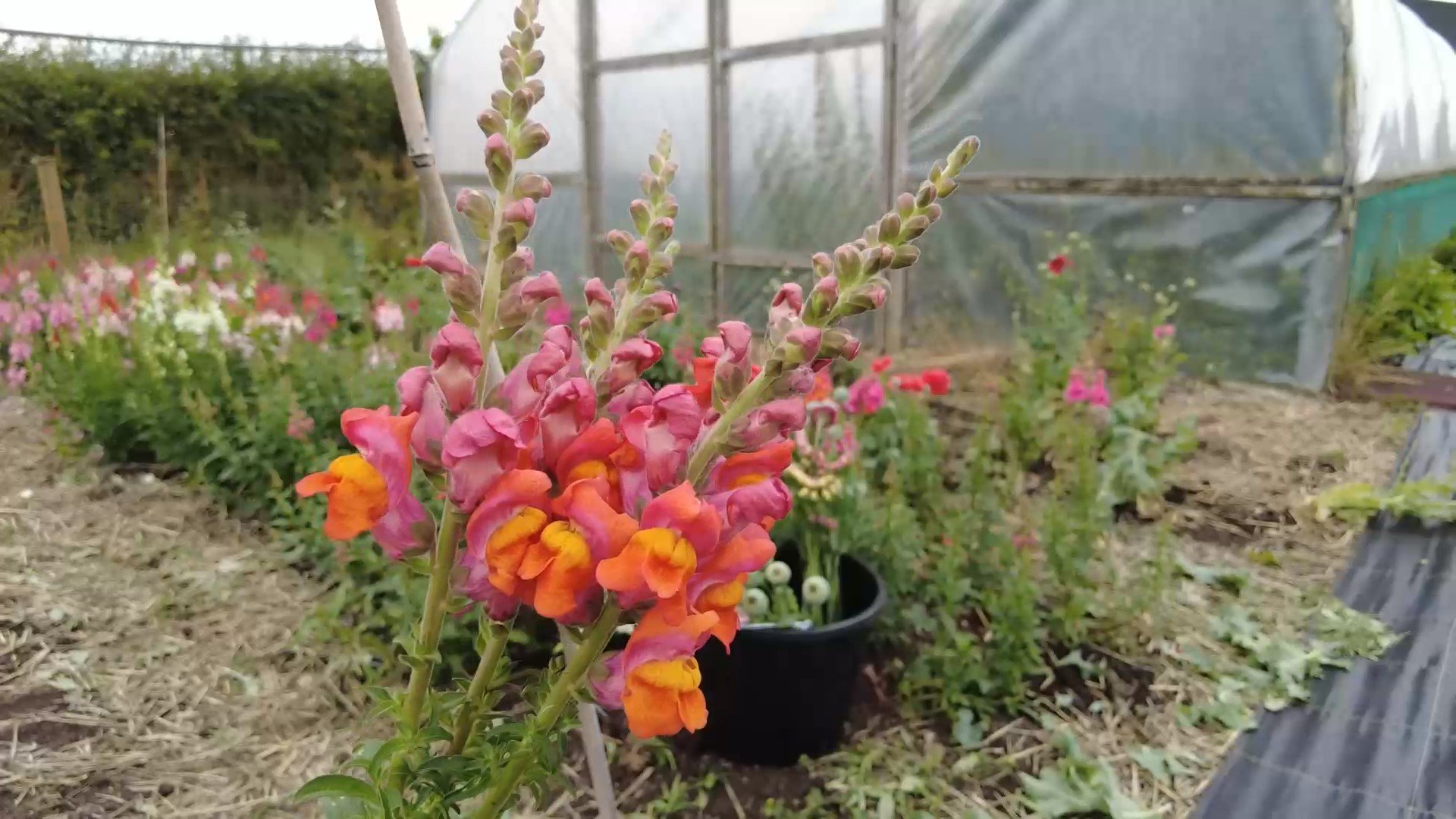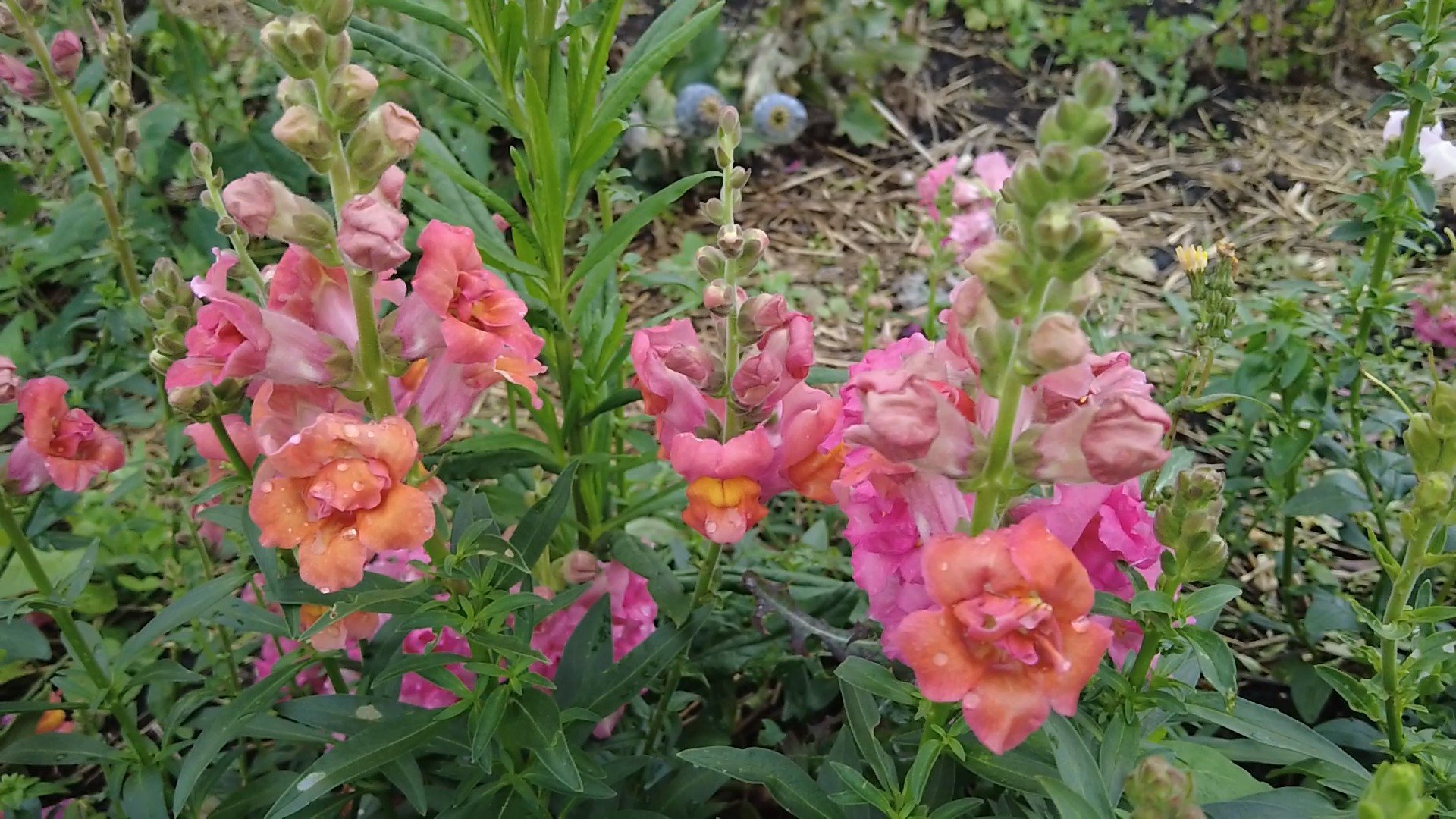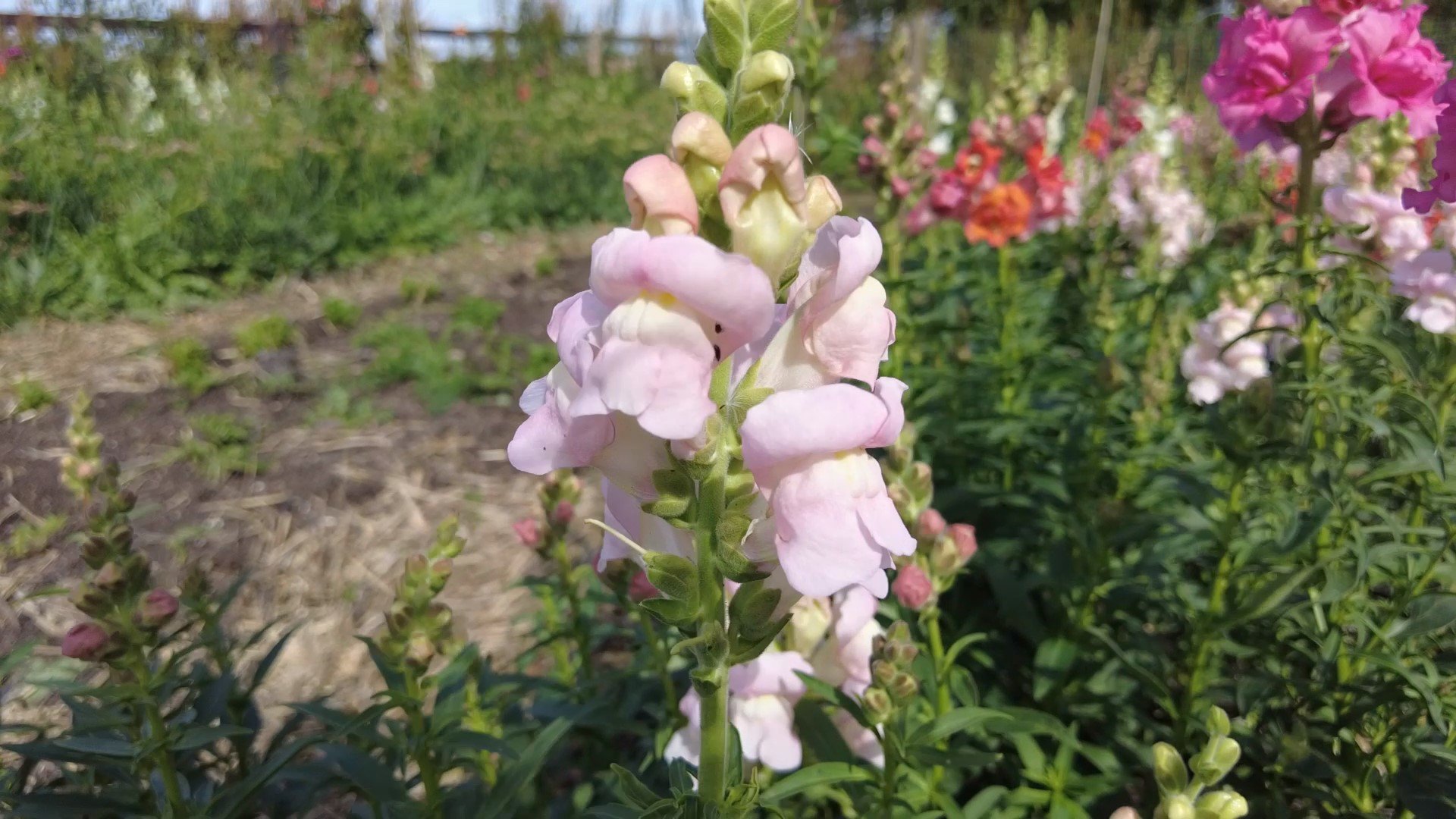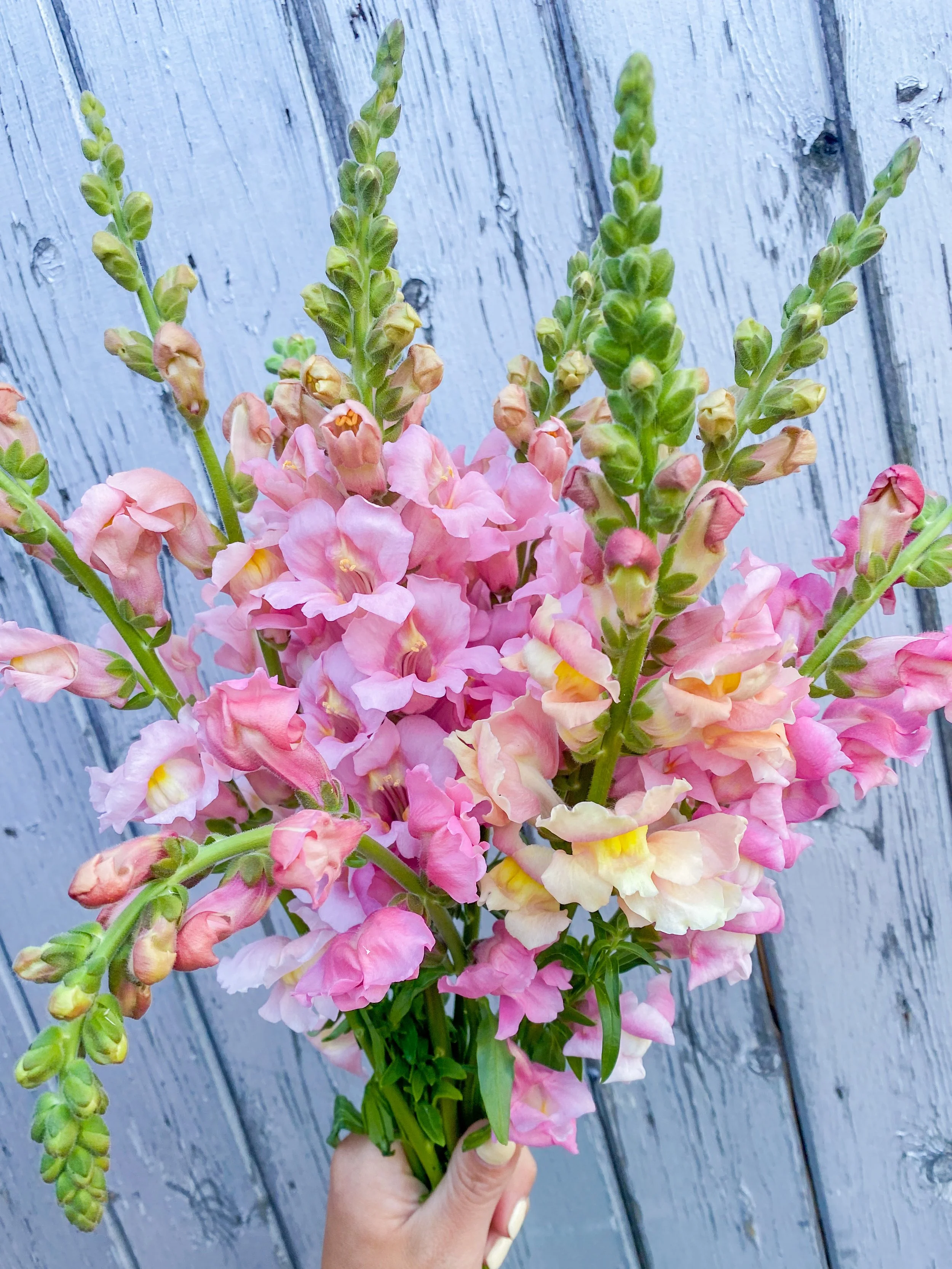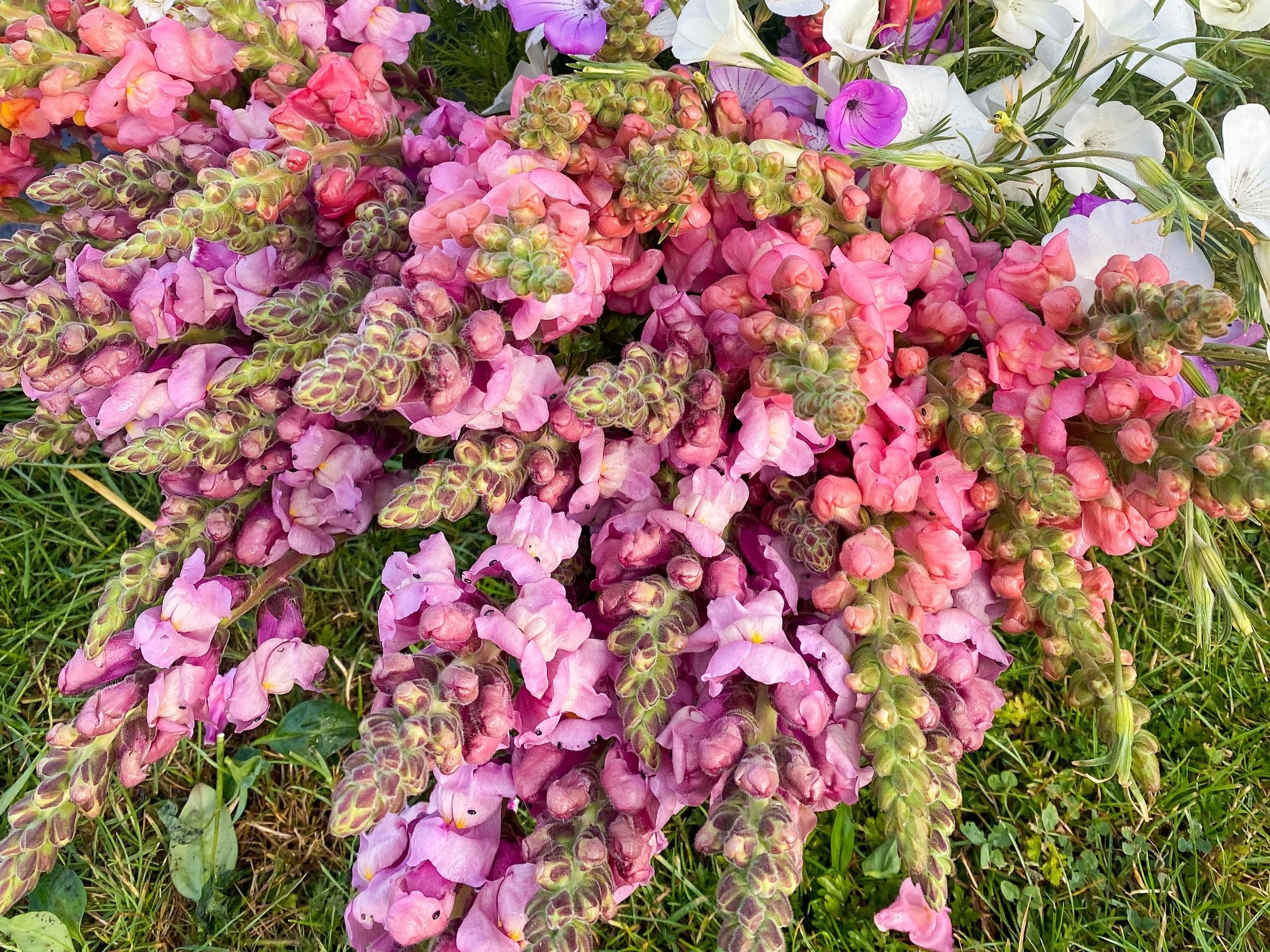How to Grow Snapdragons From Seed
Snapdragons, also known as Antirrhinum, are charming and colorful annual flowers that add beauty to any garden or floral arrangement. In this comprehensive guide, we will explore how to grow snapdragons from seed, covering everything from when and where to plant them to caring for these delightful blooms.
Introduction to Snapdragons
Snapdragons are hardy annuals that handle the winter cold especially well. They are known for their distinctive flower shape, resembling a dragon's snout that opens and closes when squeezed.
Snapdragons make good cut flowers because of their distinctive spike-shaped appearance, which adds a unique element to floral design, creating interest and depth in arrangements.
One of the elements I always like to include in my hand-tied bouquets is a spike and snapdragons are one of my favorites.
These beloved flowers come in a wide array of colors and shapes, making them one of my favorites for floral arrangements.
Interesting Facts:
Snapdragons are known for their ability to withstand cold winter temperatures and produce robust spike flowers in the following spring.
They bloom well in cool weather, making them perfect for cooler climates or spring and autumn gardens.
Snapdragons are categorized based on their flower shapes and ideal flowering times.
Where to Grow Snapdragons
Snapdragons thrive in well-drained, fertile soil and prefer full sun to partial shade. They can be grown in garden borders or containers, adding beauty to any outdoor space. The choice of location should ensure they receive adequate sunlight while also allowing for good soil drainage.
On my farm I grow them in the equivalent of USDA zone 8 which has a moderate climate featuring average winter minimums in the range of 10°F to 20°F (-12.2°C to -6.7°C).
Snapdragon Potomac Dark Orange
When to Grow Snapdragon Seeds
The ideal time to grow snapdragon seeds depends on your climate. In milder climates, you can sow them in late autumn, while in colder regions, it's best to start seeds indoors about six to ten weeks before the last frost in spring. Snapdragons need a temperature of around 21°C/70°F to germinate and grow best in cooler temperatures.
In my climate zone, I grow them in late August and early September for overwintering and in early spring, eight to ten weeks before the last frost, for summer flowers. The timing depends on your specific growing conditions and goals. I sow seeds regularly in the spring and early summer for a regular supply of blooms.
Planting snapdragons in autumn for spring flowers typically results in the strongest stems and best quality blooms. When sowing them in spring for summer flowers, the stems tend to be slightly weaker due to the warmer temperatures, which promote quicker flowering but compromise stem length and strength.
Snapdragon seedling in a soil block
Growing Snapdragons From Seed
Requirements for Growing Snapdragons
Light: Snapdragons need full sun to partial shade for optimal growth.
Soil: Plant them in well-draining, fertile soil with a neutral pH.
Water: Keep the soil consistently moist but avoid overwatering.
Temperature and Humidity: Snapdragons thrive in cooler temperatures and are hardy in USDA zones 7-11.
Fertilizer: Apply compost teas & seaweed feed to keep plants healthy.
Common Pests and Diseases: Be on the lookout for rust fungus, mold, fungal leaf spots, aphids, and spider mites.
How to Grow Snapdragons From Seed (Step-by-Step Guide)
Step 1: Fill planting cells or seedling pots with well-drained potting mix. Snapdragons do well in both soil blocks or cell trays so you could use either.
Step 2: Snapdragon seeds are tiny so I place my seeds on the surface with no additional covering of compost or vermiculite. Press them lightly into the mix without covering them, as they require light for germination.
Seeds usually take 7 to 14 days to germinate at 21°C and are quite slow to grow initially.
Step 3: If growing in Autumn, transplant to the ground eight to ten weeks after sowing or six weeks before the first frost so they can get the roots down. I space my snapdragons about 9 inches apart.
Step 4: Once the plants have started to sprout a small number of true leaves, I gently pinch the stems to remove all but the last two leaves. This helps create multi-stemmed plants capable of producing seven to ten flower spikes.
Pinching the plants actually delays flowering by a few weeks. So, if you're aiming for a more staggered blooming schedule, you can choose to pinch some of the plants while leaving others untouched.
Step 5: If you plan to plant snapdragons in an exposed location, it's advisable to use plant support netting. I've made the mistake of not using it numerous times, and it resulted in many snapdragons that became unusable due to bending or damage.
Step 6: To prevent rust on your Snapdragon flowers, make sure to water them without wetting the leaves. Do this by watering them at the base of the plant.
Harvesting Snapdragons
Harvesting snapdragons is best done when a third to half of the blooms are open. Cut the stems near the base of the plant and place them upright in a bucket. It might be helpful to either wrap the stems in paper or use a mesh or tape grid on the bucket to keep them standing upright.
Snapdragons exhibit geotropism, which means they adjust their position according to gravity. If the stems lean over in the bucket, they will try to straighten themselves out, potentially causing wonky stems. Unfortunately, once the stem has taken shape, it cannot be rectified.
For optimal results, it's recommended to harvest snapdragons in the cool of the morning or evening. Cut the stems directly into cool water and keep the bucket in the shade to prolong their freshness.
Read more about harvesting cut flowers here.
Snapdragon Potomac Lavender
Additional Tips
Snapdragons will flower for at least 6 weeks in your garden or flower bed.
Their cut flowers have a vase life of 5-8 days, so keep this in mind when planning your bouquets.
Types of Snapdragons
When selecting the most suitable cultivar of snapdragon to grow, you'll find several categories to consider, primarily based on flower shapes.
These categories encompass traditional, Azalea and Open Face varieties. Traditional cultivars like Potomac, Costa, and Rocket exhibit the typical snapdragon appearance, while Azalea varieties boast frillier appearances with double petals, as seen in varieties like Madame Butterfly.
Some of my favorite snapdragon varieties include Potomac Dark Orange, Potomac Dark Pink, Potomac Lavender, Costa Apricot, Madame Butterfly Bronze, and Costa Silver.
Additionally, there are open-face varieties like Chantilly, which are also frilly in appearance but feature single petals and more open blooms that bees can easily access.
Apart from flower shapes, snapdragons are categorized into four groups, each based on the ideal flowering time for the cultivar. These groups provide a general guideline, and some cultivars may belong to more than one group:
Group one: Suited for early spring harvest when shorter days mean less light and lower temperatures. This group includes varieties such as Legend and Chantilly.
Group two: Ideal for spring and autumn harvests when temperatures and daylight hours are still relatively low but increasing. Costa and bridal varieties are part of this group.
Group three: Cultivars in this category are adaptable to a range of conditions, making them suitable for spring, summer, and autumn production. They can tolerate medium day lengths, temperatures, and light levels. Examples include Costa, Opus, and Potomac.
Group four: Suited for summer harvests with long days, ample sunlight, and warm temperatures. Potomac varieties are well-fitted for this group.
Consider these categories to select the perfect snapdragon cultivar for your specific growing conditions and goals.
Frequently Asked Questions
Where do Snapdragons get their name from?
Snapdragons get their name from the botanical name "Antirrhinum," which is derived from the Greek words "anti," meaning "instead of" or "counterfeiting," and "rhin," meaning "nose." This name is attributed to the petals of the snapdragon flower, which are thought to resemble the nose of a creature.
In the English language, the creature represented by the flower is a dragon, while in other languages like Roman, German, and Italian, it is likened to a lion. Interestingly, you can open and close the dragon's mouth by pinching the petals sideways with your fingers and thumb.
What do Snapdragons Represent?
Snapdragons carry symbolic meanings that can be a bit complex due to their mixed messaging. When given as a gift, snapdragons can represent qualities such as grace, elegance, and strength. However, they also have connotations of deviousness or the act of hiding one's true feelings, adding a layer of ambiguity to their symbolism.
In addition to these nuanced meanings, snapdragons have a rich folklore associated with them. Their seed pods have a skull-like appearance, which led to their historical use as an antidote to witchcraft. According to legend, wearing any part of the snapdragon plant as a charm on the body was believed to protect the wearer against deception, curses, and magic.
What do snapdragon seeds look like?
Snapdragon seeds are minuscule and have a dust-like appearance. They typically range in color from light brown to black.
How long do snapdragons take to grow from seed?
It takes approximately 12-14 weeks for snapdragons to grow from seed and start flowering when sown in spring.
Can you get seeds from cut snapdragons?
Cut snapdragons will not produce seeds. Most cut flowers are cut before the plant is pollinated which means seeds will not be produced anyway. It often takes weeks or months for a plant to produce viable seeds, so even if the flower is pollinated, the short vase life of the flower will prevent seeds from forming. Seeds are best collected from flowers that are still attached to the plant.
Snapdragons are a wonderful addition to any garden or floral arrangement. With their unique appearance and vibrant colors, they are sure to bring joy to your outdoor spaces.
By following the steps outlined in this guide, you can successfully grow snapdragons from seed and enjoy their beauty throughout the seasons.
Remember to provide them with the right amount of sunlight, well-draining soil, and regular care to ensure healthy growth and abundant blooms.




